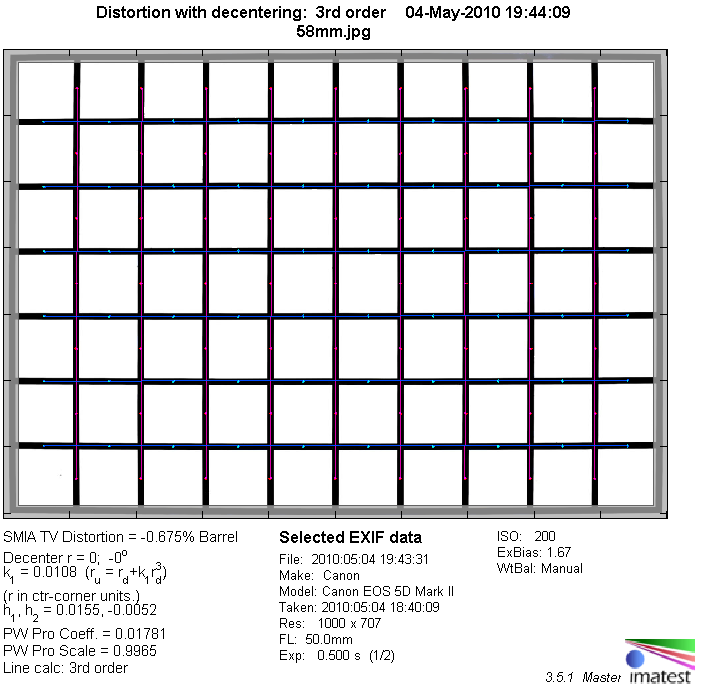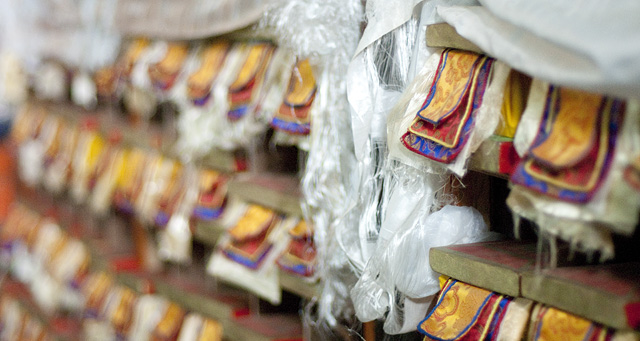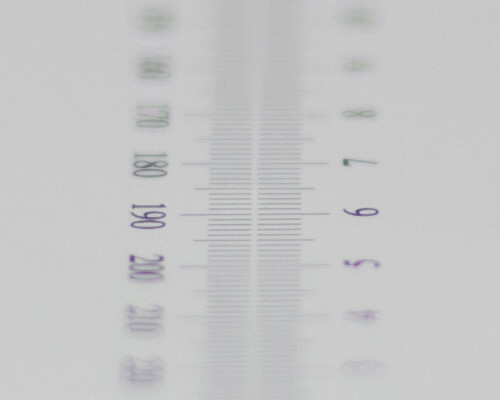|
Voigtlander Nokton 58mm f/1.4 SL II - Full Format Review / Test Report - Analysis |
|
Lens Reviews -
Canon EOS (Full Format)
|
|
Page 2 of 2

Distortion
The Nokton produces only a slight degree of barrel distortion (0.7%) which is usually not objectionable in field conditions.

The chart above has a real-world size of about 120x80cm.
Vignetting
The 58mm f/1.4 is obviously an ultra-large aperture lens and as such it renders a bit of vignetting at maximum aperture especially on full format DSLRs. At f/1.4 the light fall-off is very high at ~2.3EV - this will be noticeable in images but it's not any worse than other lenses in this class either. The situation eases at f/2 but if needed you should really stop down to f/2.8 to reduce the issue to a very moderate degree.

MTF (resolution)
Typical for ultra-large aperture lenses the Nokton produced relatively mixed resolution figures under lab conditions. The center resolution is very good at f/1.4 albeit at a reduced contrast. The border quality is actually quite decent whereas the extreme corners are relatively soft (although not too bad). The results are naturally better at f/2 but the results get really snappy at f/2.8. The truly excellent peak performance is reached around f/5.6. Diffraction effects get slightly more obvious from f/11 onwards but f/11 is still plenty sharp.
The lens seem to produce much softer results at very close focus distances so better avoid large aperture settings here.
Some keen users may note that the LW/PH figures exceed the resolution of the sensor and as such Nyquist - see this document (bottom) for more details about the procedure if you'd like to dive into this. Imatest can look a bit beyond the sensor resolution by taking some additional parameters into account.
Please note that the MTF results are not directly comparable across the different systems!
Below is a simplified summary of the formal findings. The chart shows line widths per picture height (LW/PH) which can be taken as a measure for sharpness.
If you want to know more about the MTF50 figures you may check out the corresponding Imatest Explanations
Chromatic Aberrations (CAs)
Lateral Chromatic aberrations (color shadows at harsh contrast transitions) are generally very well controlled and not field relevant at less than 0.4px on the average at the image borders.

Bokeh
The quality of the bokeh, the out-of-focus blur, is naturally of major interest for such an ultra-large aperture lens. The Nokton has two hearts here - at large apertures the foreground blur is very smooth but the background can be somewhat rough if the scene contains contrasty objects. Out-of-focus highlights show a very distinctive outlining effect. The issues ease somewhat at f/2 and the bokeh is very good at f/2.8 although the blur potential is naturally reduced here.
 The following sample crop illustrates the difference between the smooth foreground and the rather busy background at f/1.4:
The following sample crop illustrates the difference between the smooth foreground and the rather busy background at f/1.4:

Longitudinal Chromatic Aberrations (LoCA)
LoCAs (non-coinciding focal planes of the various colors), sometimes called "bokeh fringing", is usually a problem for ultra large aperture lenses and the Nokton is no exception to the rule here. If you have a look at our supplied samples below you should be able to can notice the green to magenta halos around the numbers. The effect is very noticeable at f/1.4 and f/2. It's not really objectionable anymore at f/2.8 and basically gone at f/4.
|
Move the mouse cursor over the f-stop marks below to observe the respective LoCAs
|
| f/1.4 |
f/2 |
f/2.8 |
f/4 |
|

|
Verdict
The Voigtlander Nokton 58mm f/1.4 SL II is an interesting offer in the standard lens arena. Its focal length is slightly longer than a typical standard lens which is certainly a plus for portraits and such. Like most of its cousins it suffers from somewhat lowered contrast, high vignetting and corner softness at f/1.4. The bokeh, especially the background blur, could also be a little better at this setting. Stopping down boosts the quality quite a bit and from f/2.8 it's capable of delivering very good lens results (including the bokeh) and it reaches truly excellent quality levels at f/5.6. The amount of barrel distortions is pretty much negligible from a field perspective and lateral CAs are not much of an issue either.
The lens is absolutely beautifully crafted and a joy to use despite the lack of AF. The lens is fairly attractively priced at around 400US$/€ so if you've got a soft spot for a more classical approach to photography it may be worth a thought. Please note that it's only available for Nikon and Pentax at this stage so till the EOS version is released you'd need to use an adapter with all the shortcomings of this approach (no camera-controlled aperture, AF confirmation only via "chipped" adapters).
|